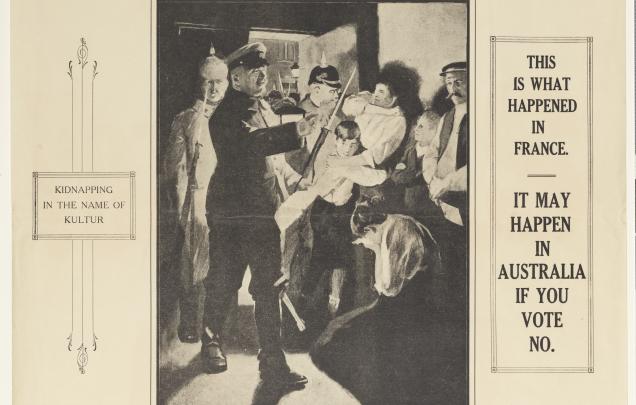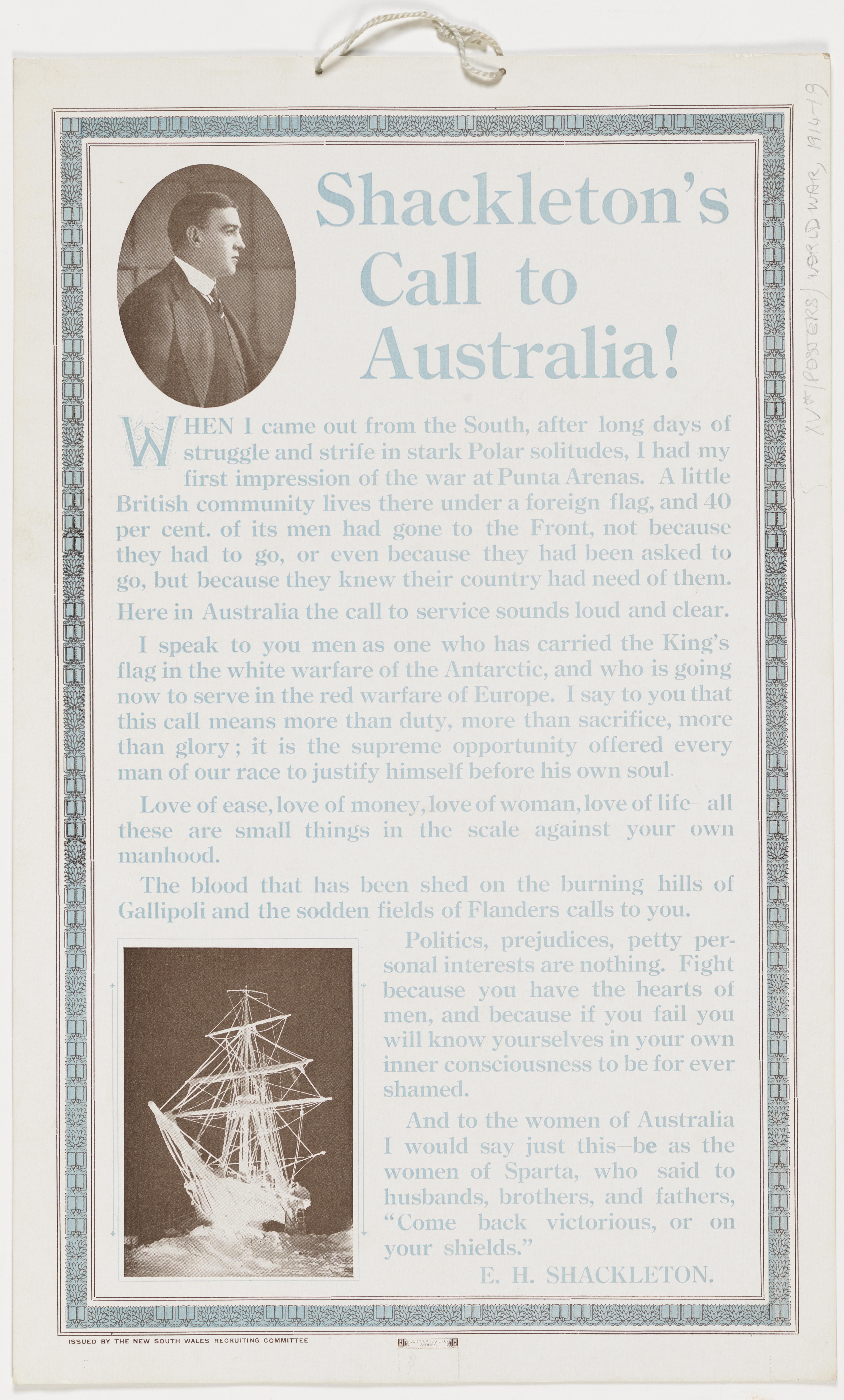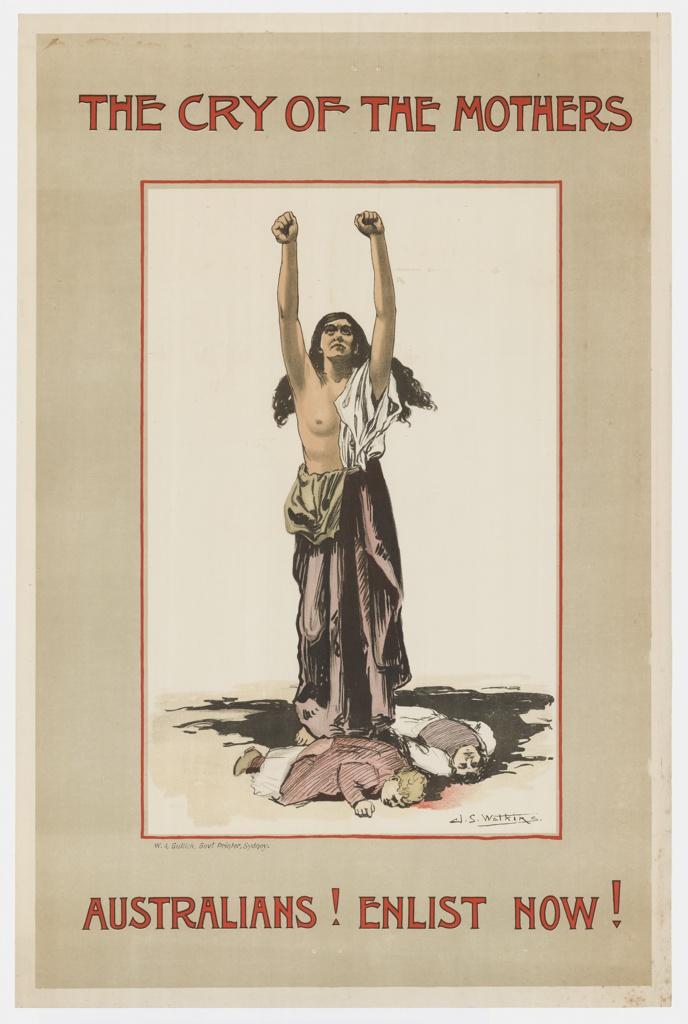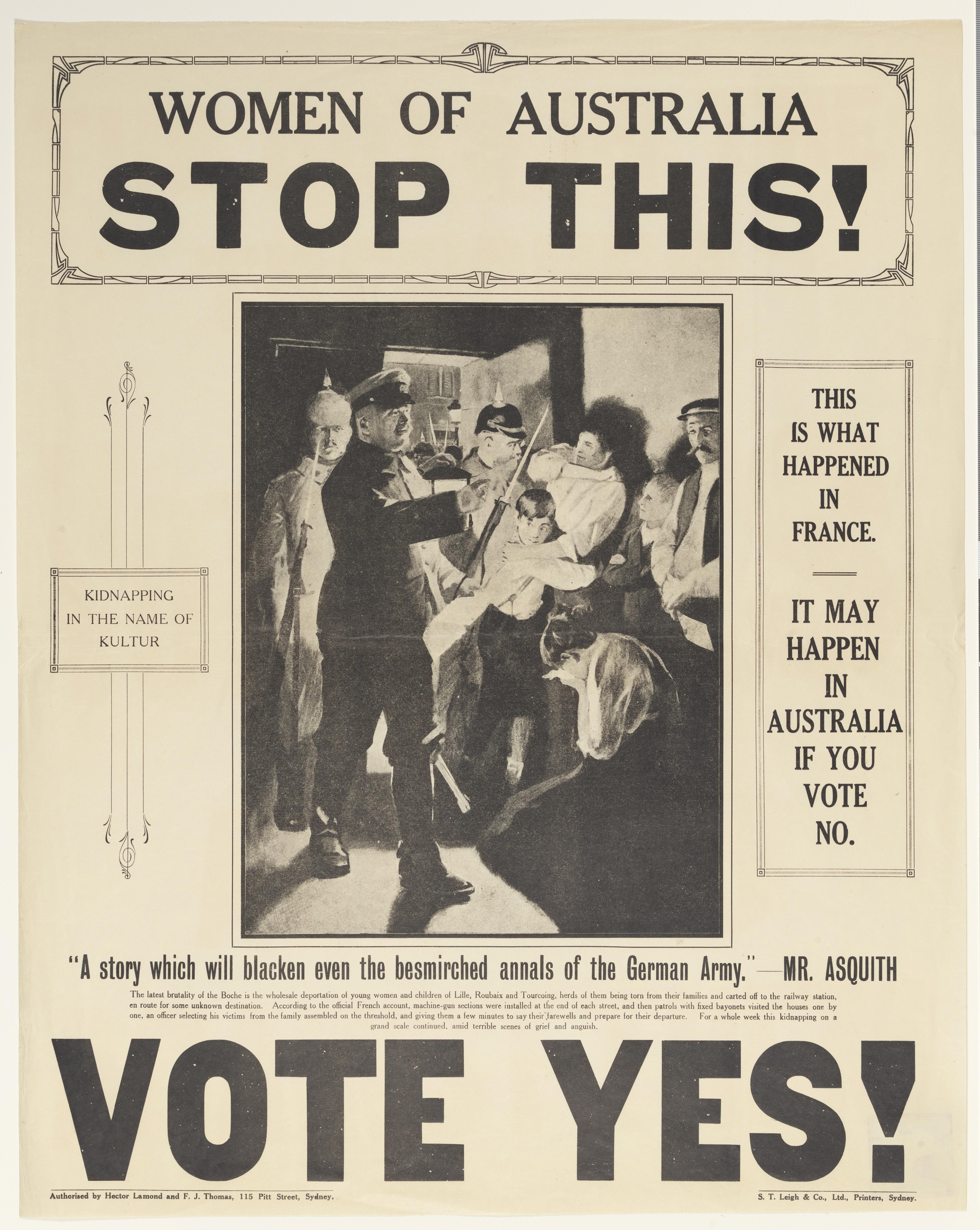The Cry of the Mothers
This is the student activity 1 of 4 of the WWI: recruitment, conscription, propaganda learning activity.

The power of women



When it came to both recruitment and the conscription referendums, the political power of women was recognised and utilised. In the conscription debate both sides focussed attention on winning the vote of women, sometimes creating mirror images of successful posters.
This learning activity presents a range of resources that speak directly to or about women on the questions of enlistment and conscription in the form of posters, handbills, advertisements and newspaper articles.
A prominent moment in the conscription debate came when a leaflet, known as The Blood Vote, bearing a verse by W.R. Winspear and cartoon by Claude Marquet started to be distributed to homes and published in newspapers around the country. The Blood Vote (which can be read in The Catholic Press, and a copy of which, including the illustrations, can found in the collections of the State Library of NSW) formed part of the ‘No’ camp’s campaign. Authorised by J. Curtin (who would later become Prime Minister of Australia during WWII) it featured an image of a deeply worried woman casting a ‘Yes’ vote while Billy Hughes looks on, gleefully.
As a result of The Blood Vote, a campaign to counter its influence began, including letters of protest to newspapers and a pro-conscription version (The Dishonor Vote) by Janet E. Stinson, which was to appear in several newspapers of the time.
Two examples of letters of protest to The Blood Vote that appear in newspapers at the time include:
- An Anti-Hoax in Corryong Courier, 13 December 1917, p. 3
- Women and War in The Argus, 30 November 1917, p. 6
In addition to these more indirect appeals were those that spoke, pleaded, with women directly such as the article titled Reinforcements Referendum: A Call to Womanhood that appeared in The Sun on 2 December 1917, p. 5.
Referring to The Blood Vote, the other articles listed above, and the sources from the collections of the State Library of NSW found below, answer the following:
- What was it specific to women that these campaigns were appealing to and why? (Once again, consider the use of stereotypes, allegorical imagery, well-known figures, caricature and racism)
- How were women being characterised at the time?
- How can an understanding of historical context help us to understand why these appeals were made, and how they might have been successful? (It may be helpful to start by considering whether these same campaigns would be successful today and why or why not.)